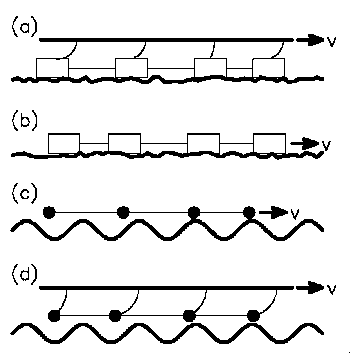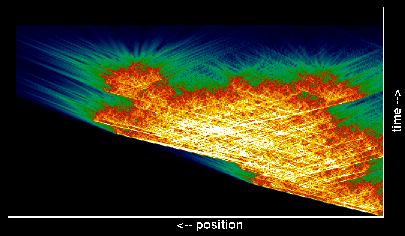
|
Several mechanic models showing power laws in the avalanche
statistics: (a) Burridge-Knopoff (earthquake) model, (b) train model,
(c) Frenkel-Kontorova model, and (d) Frenkel-Kontorova-Tomlinson
model. Neigboring blocks or particles are coupled by springs. In
model (b) and (c) the right end of the chain is pulled very slowly,
whereas is case (a) and (d) a rigid plate is pulled. The chain is
connected at the plate by leaf springs.
In the first two models the interaction with the surface
is modeled by a phenomenological friction law. For the two other
models, this law is replaced by a spatially periodic potential and
viscous friction. Model (b) and (c) show real SOC, whereas the two
other models have an intrinsic cutoff where the power-law regime
ends. The cutoff scales with the inverse of the square root of
stiffness of the leaf springs.
For more details see Ref. 22.
|

